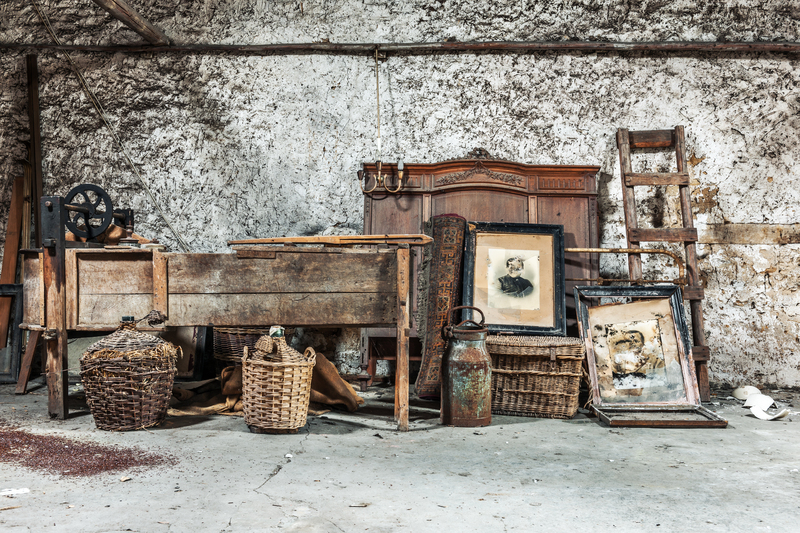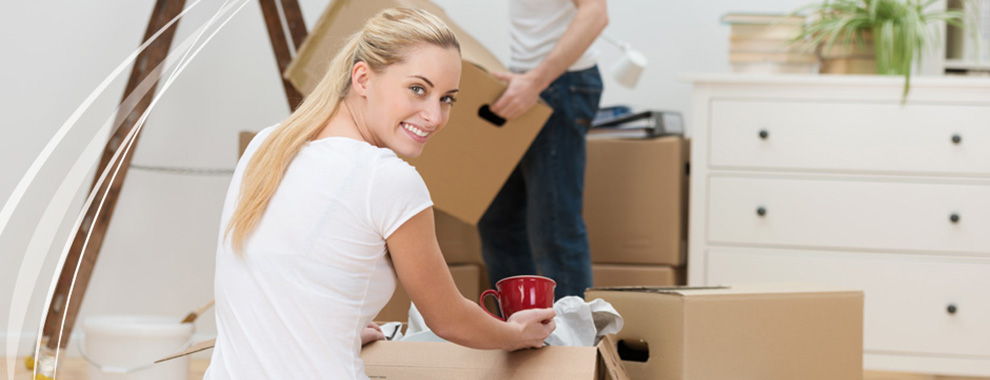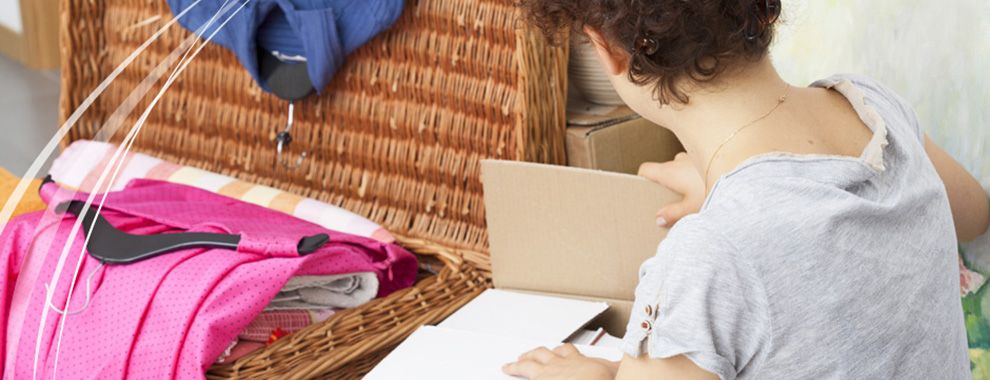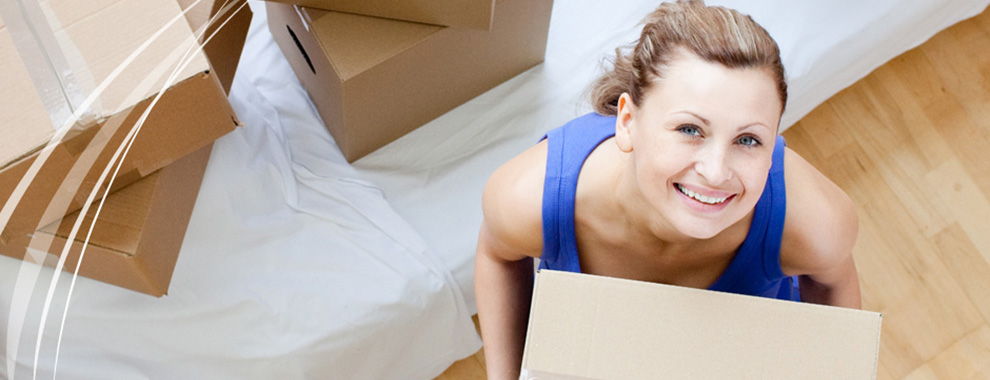Streamline Your Moving Process: Expert Packing Techniques
Posted on 29/05/2025
Streamline Your Moving Process: Expert Packing Techniques
Moving to a new home can be an exciting adventure, but it often comes with stress, chaos, and a seemingly endless to-do list. The secret to a smoother, less stressful experience? Streamline your moving process with expert packing techniques that save time, energy, and even money. Whether you're a first-time mover or a relocation veteran, mastering efficient packing methods can make your move seamless and organized. In this comprehensive guide, we'll explore professional tips and strategies that ensure your belongings arrive safely and your move stays on track.

Why Efficient Packing Matters in Your Moving Journey
Proper packing is the foundation of a successful move. It does more than protect your possessions--it simplifies every stage of the process. Let's look at why streamlining your packing process should be a top priority:
- Minimize Damage: Well-packed boxes safeguard fragile items from breakage.
- Save Time: Strategic packing shortens both your preparation and unpacking times.
- Reduce Stress: Organized packing means fewer last-minute scrambles and easier tracking of your possessions.
- Cut Costs: By using space efficiently, you'll need fewer boxes and reduce moving truck fees.
- Simplify Unpacking: Labeled, logically packed boxes make move-in day setups quick and painless.
Pre-Move Preparation: Setting the Stage for Success
Before you even tape up your first box, there are critical steps that streamline your moving process:
1. Declutter Before You Pack
_One of the greatest expert moving tips is to declutter your belongings before packing._ Go room by room and create three piles:
- Keep: For items you use and love.
- Donate or Sell: For gently-used items you no longer need.
- Dispose: For broken, outdated, or unusable things.
Fewer items mean less to pack, haul, and unpack--truly simplifying your move.
2. Gather High-Quality Packing Supplies
Invest in sturdy moving boxes, bubble wrap, packing paper, tape, scissors, and markers. For fragile items, consider reinforced boxes and specialty materials. Don't skimp on quality--flimsy boxes increase the risk of damage during transit.
3. Create a Detailed Packing Plan
Map out your packing strategy. Decide the order in which to tackle each room and set mini-deadlines. Prioritize storage spaces and less-used rooms first. This keeps you organized and reduces last-minute panic.
Expert Packing Techniques to Streamline Your Move
Now, let's dive into the techniques professional movers use to guarantee an efficient, stress-free move.
1. Start Early and Pack Incrementally
The biggest moving mistake? Waiting until the last minute. Begin packing non-essential items several weeks before your move. Set aside a few boxes each day to prevent overwhelm and allow careful, organized packing.
2. Label and Inventory Every Box
Label each box with room, contents, and handling instructions (e.g., "fragile") as you go. For extra efficiency, number each box and keep a corresponding inventory sheet for reference. Consider color-coded labels for each room. This system is key to a streamlined moving process and will save hours during unpacking.
3. Use the Right Box for Each Item
Heavier items (like books) should go in small boxes, lighter and bulkier items (like bedding) in large boxes. This keeps boxes easy to lift and reduces the risk of breakage from overloading.
- Small boxes: Books, small appliances, tools.
- Medium boxes: Pots, pans, toys, shoes.
- Large boxes: Linens, pillows, clothing.
- Specialty boxes: Dishes, glassware, mirrors, wardrobes.
4. Master the Art of Packing Fragile Items
Glassware, ceramics, electronics, and artwork need extra protection. Follow these expert packing strategies:
- Use bubble wrap and packing paper for wrapping each piece individually.
- Fill empty spaces with crumpled paper or towels for added cushioning.
- Pack plates vertically (like records) for strength.
- Label boxes as "fragile" and note which side should be kept upright.
5. Maximize Space and Balance Weight
Fill all available space in boxes to prevent shifting during transit, but don't overload. Distribute weight evenly: Always place heavier items at the bottom and lighter items on top. This keeps boxes stable and reduces the risk of crushing.
6. Utilize Suitcases, Bins, and Drawers
Your move is the perfect opportunity to optimize all available containers. Pack books, shoes, or heavy items in rolling suitcases. Store loose clothes in dresser drawers or plastic bins, wrapping them in plastic wrap to keep everything secure. This expert approach reduces the total number of boxes required.
7. Keep Essentials Accessible
Pack a first-night box for each family member. Include toiletries, a change of clothes, medications, chargers, basic kitchen items, and important documents. You'll avoid desperately digging through boxes on your first night in your new home.
Room-by-Room Packing Strategies
Every room poses unique challenges. Here's how to streamline packing for each:
Kitchen
- Start by packing rarely-used appliances and specialty cookware.
- Protect glassware and dishes with plenty of padding.
- Seal opened packages with tape or pack them in sealed bags.
- Label boxes to identify "pantry," "pots and pans," or "utensils."
Living Room
- Detangle electronic cords and bag them with the matching devices.
- Remove and wrap lamp shades, and cushion artwork and mirrors.
- Disassemble furniture if possible, keeping screws and hardware in labeled bags.
Bedrooms
- Use wardrobe boxes for hanging clothes to keep them wrinkle-free.
- Pack out-of-season clothes first.
- Disassemble beds the night before moving and keep bedding accessible.
Bathrooms
- Pack everyday essentials in your overnight bag.
- Use small boxes for toiletries and medications.
- Seal liquids to prevent leaks.
Garage, Basement, and Outdoor Areas
- Group items by category (tools, sports equipment, outdoor furniture, etc.).
- Safely dispose of hazardous materials (paint, gasoline, chemicals).
- Remove fuel from powered equipment before packing.
Expert Tips to Accelerate and Simplify Your Packing
- Enlist Help: Don't hesitate to ask family or hire professional packers, especially for large or fragile items.
- Use Technology: Packing apps and digital checklists (like Google Sheets) help track what goes where.
- Photograph Electronics: Take photos of wiring setups before disconnecting to simplify reassembly.
- Pack by Category, Not Just Room: This helps when you need something specific later or when creating an inventory.
- Wrap with What You Have: Use towels, blankets, and clothing in place of bubble wrap to save space and money.
- Clear and Clean: As you empty each room, give it a quick clean--this makes move-out day easier.
Streamline Your Move with Packing Innovations
Take your moving process to the next level by leveraging innovative products and smart tools:
- Reusable Plastic Bins: Instead of cardboard, consider sturdy, stackable bins which are eco-friendly and weather-resistant.
- Vacuum Bags: Compress clothing, bedding, and soft goods to save space.
- Furniture Blankets and Movers' Wrap: Prevent dents and scratches on your largest pieces.
- Moving Straps and Dollies: Make transporting heavy boxes and furniture safer and easier.
Common Packing Mistakes to Avoid
- Procrastination: Packing at the last minute causes mistakes and accidents. Start early!
- Overpacking Boxes: This leads to box breakage and back strain. Stick to weight limits.
- Ignoring Labeling: Skipping labels leads to chaos at your new home.
- Poor Padding: Insufficient wrapping for fragile items results in heartbreak.
- Dismissing Inventory: Not tracking box contents leads to lost items and frustration.
Professional Moving Services: Should You Hire Experts?
If budget allows, consider hiring professional packers or a full-service moving company. They use proven moving and packing techniques, bring their own supplies, and are insured in case of accidents. What you get:
- Time-saving, efficient packing and labeling.
- Expert handling of fragile and valuable items.
- Insurance coverage for peace of mind.
- Assistance with loading, unloading, and furniture assembly.
Get quotes from multiple providers, check reviews, and clarify their included services in advance. Many companies offer partial packing services if you want to handle some rooms yourself.

After the Move: Efficient Unpacking Makes Your New Place Home
Expert packing techniques also benefit you after the move. Because your boxes are organized, labeled, and inventoried, unpacking becomes far less daunting. To maintain your momentum:
- Unload boxes to the correct rooms right away.
- Set up essentials first: beds, kitchen basics, and bathroom necessities.
- Unpack one room at a time to avoid scattered messes.
- Break down boxes and recycle packing materials as you go.
This targeted approach allows you to settle in faster and enjoy your new home stress-free.
Your Streamlined Move Is Within Reach
With the right packing techniques, you can streamline your moving process from start to finish. Efficient packing protects your belongings, reduces headaches, saves money, and ensures a smooth transition to your next adventure. Whether you do-it-yourself or enlist professional help, following these expert strategies will transform your next move into an organized, manageable experience. Happy moving!
Key Takeaways to Remember
- Start packing early and go room by room.
- Declutter before you box up anything.
- Label and inventory every box for easy unpacking.
- Use quality supplies and thoughtful techniques to protect your items.
- Consider professional help if the project feels overwhelming.
Implement these moving and packing tips, and you'll enjoy a streamlined, successful relocation--every time.









